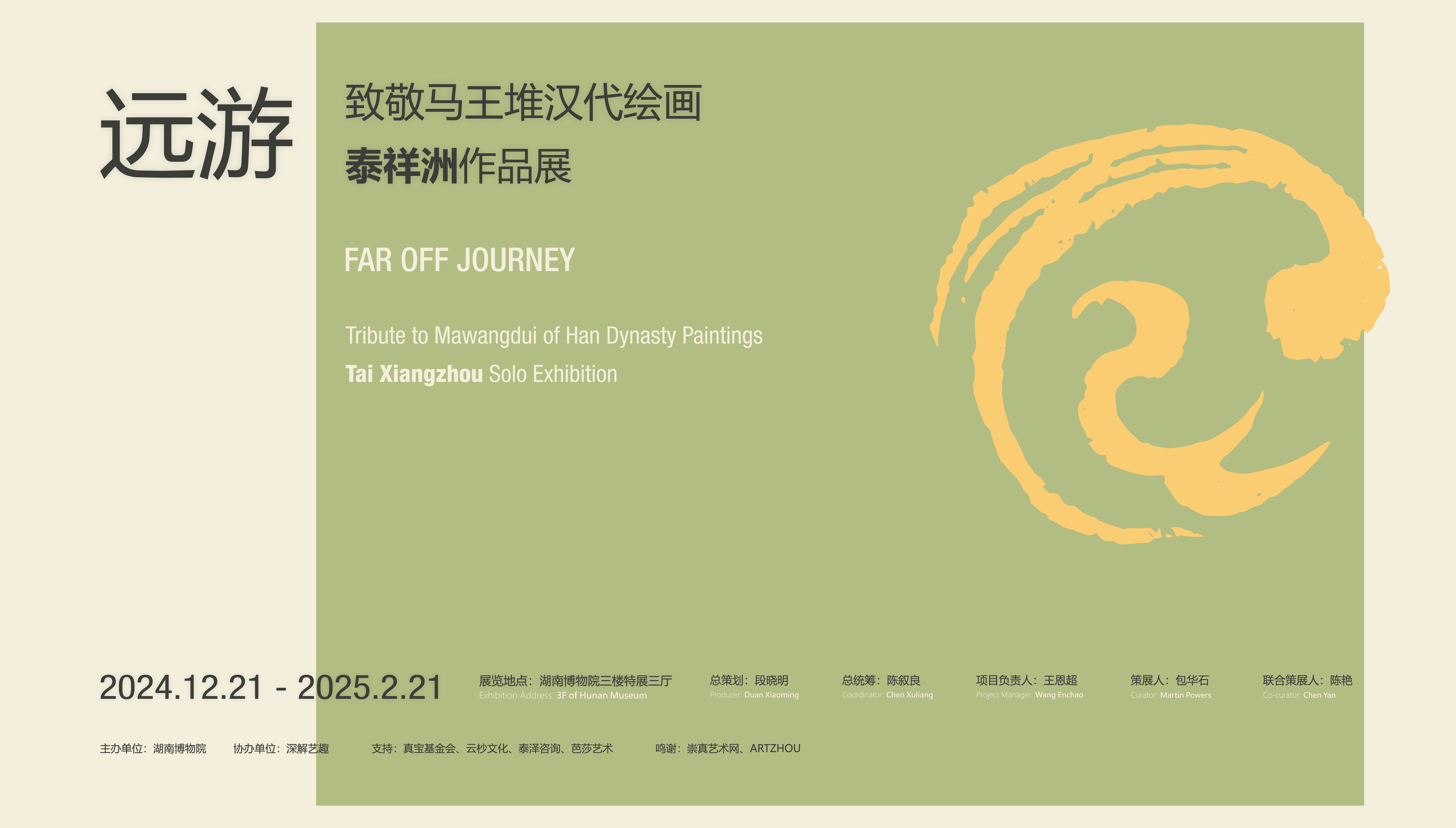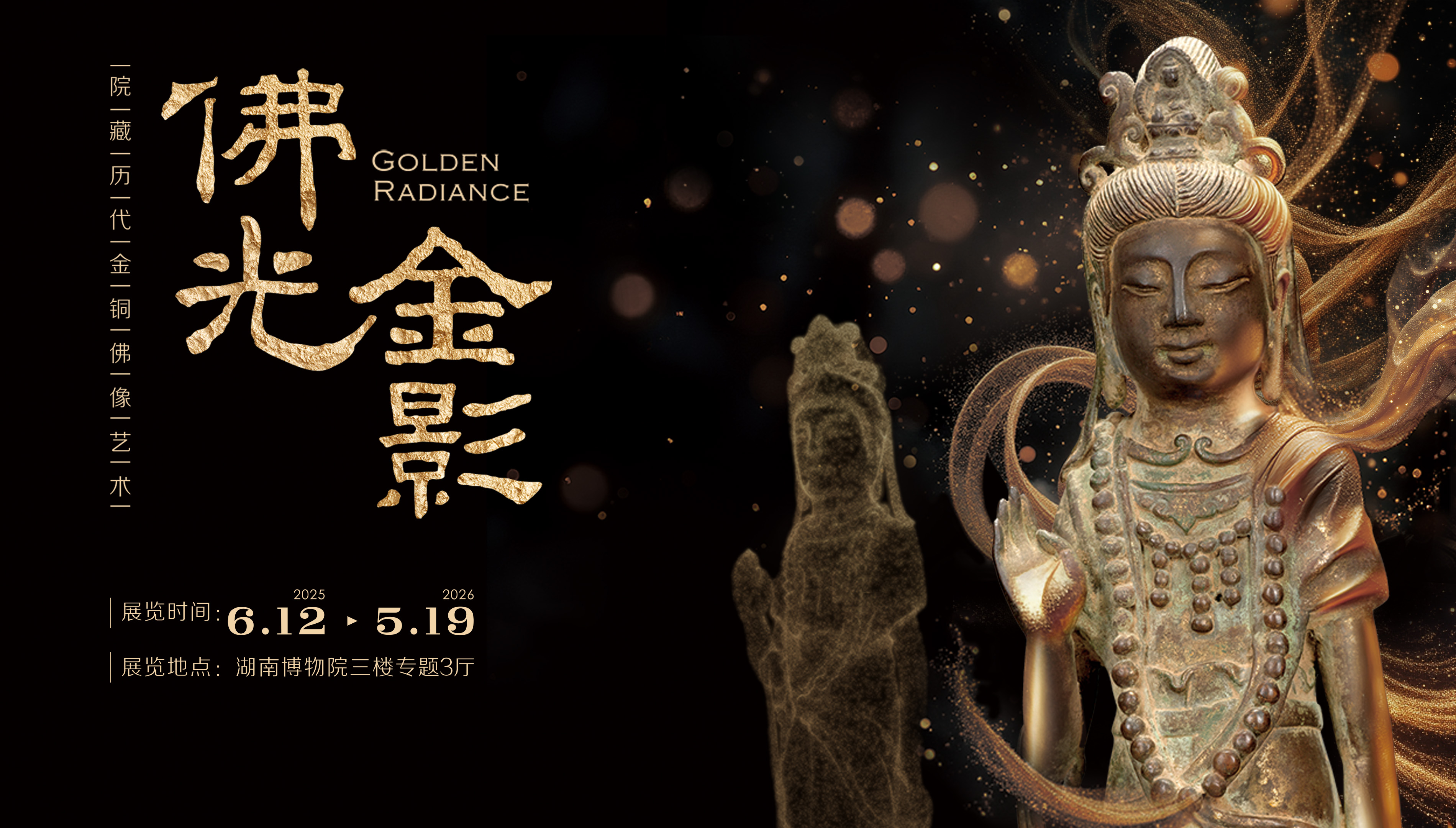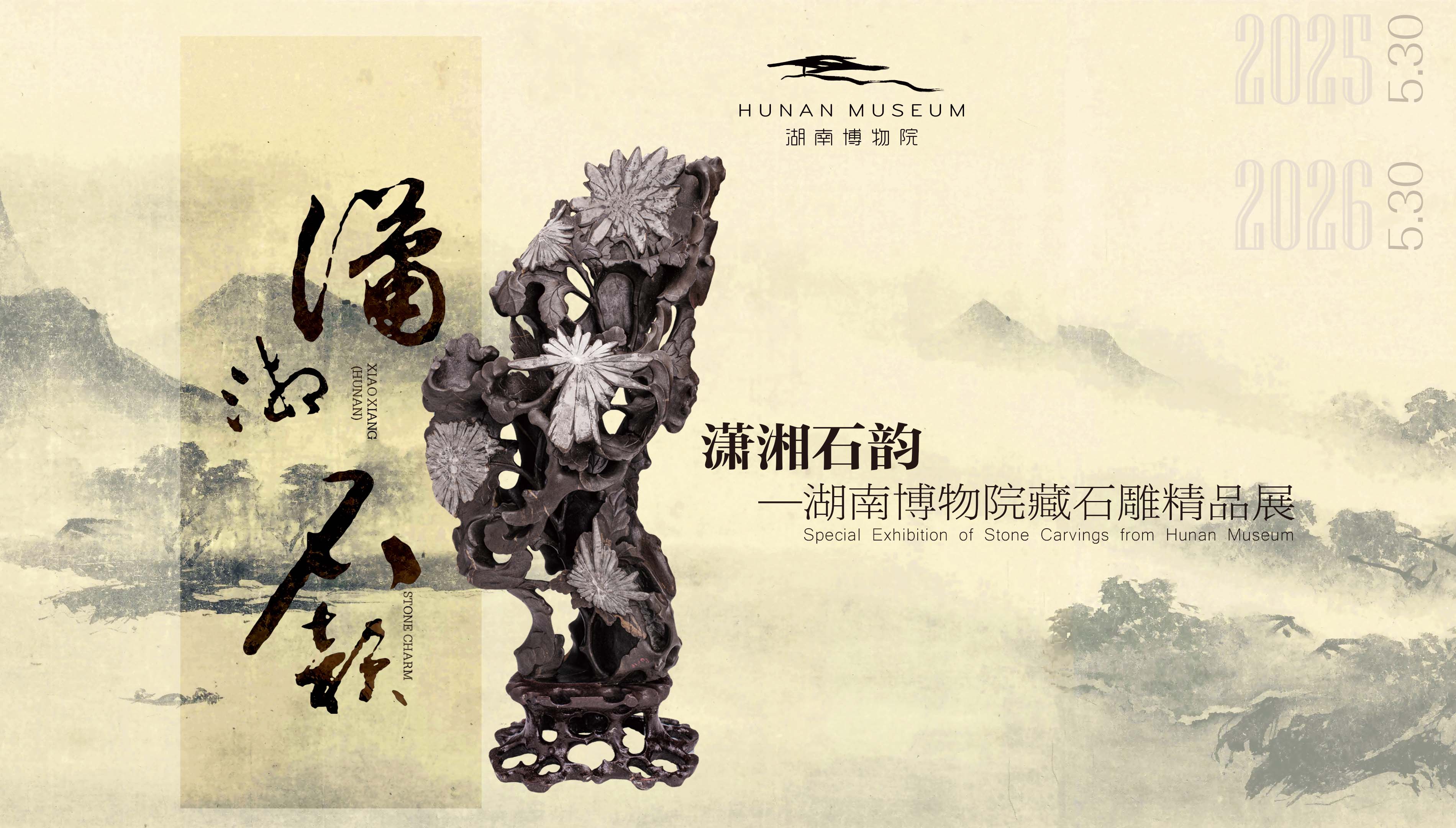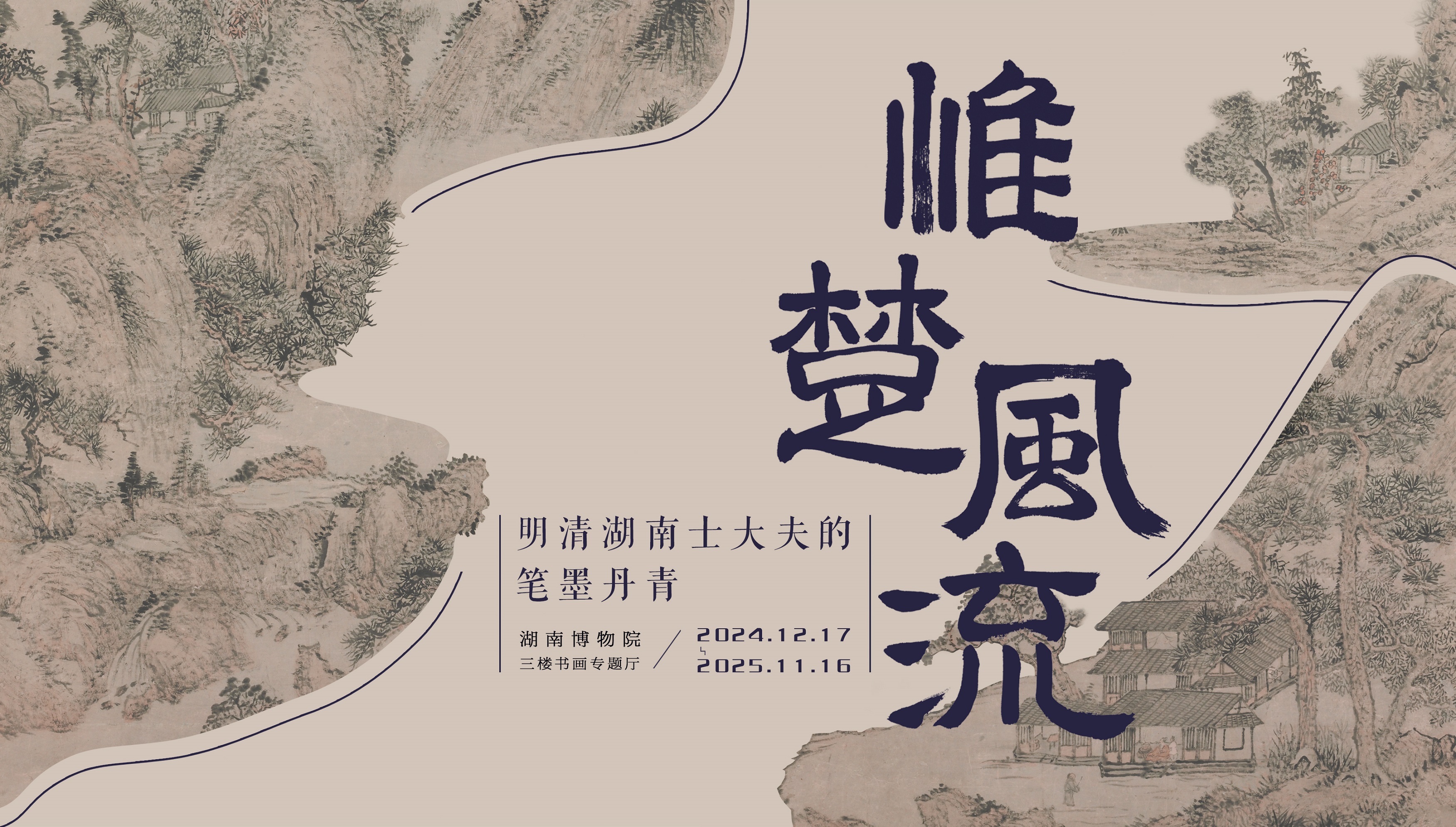Current Exhibitions
Changsha Mawangdui Han Dynasty Tombs Exhibition
3rd Floor
Permanent Exhibition
Free admission
The excavation of the three Western Han Dynasty Tombs at Mawangdui, Changsha, which took place between 1972 and 1974, was one of the world’s most important archaeological discoveries of the 20th century. The fully preserved tomb structure as well as a wealth of funerary items serve to fully embody everyday life and funeral concepts during the Han Dynasty. Over 700 exquisite lacquer items with intricate workmanship reflect the brilliant accomplishments of Han Dynasty lacquerware, and over 500 exquisite textile garments fully attest to the “Kingdom of Silk” (Seres) in the Western historical records. More than 50 bamboo slips and silk manuscripts serve as “encyclopedias”, demonstrating the knowledge and wisdom of the ancient sages. Strange and bizarre coffin paintings embody the fantasies of people in the Han Dynasty ascending to the heavens and longing for external life, while the dreamlike face of a deceased woman is a testament to extraordinary preservation techniques. The Mawangdui Han Dynasty Tombs are renowned as the exemplar of the history and civilization in the early Han Dynasty, providing a window to understand society in China over 2,100 years ago.
Hunanese
2nd Floor
Permanent Exhibition
Free admission
Hunan, located in the central Chinese hinterland, is bounded in the north by the waters of Lake Dongting, embraced on three sides by majestic mountains, and crisscrossed by the four rivers, Xiang, Zi, Yuan, and Li. The province, known as the “Land of the Hibiscus” since Tang Dynasty, is blessed with rich resources and a temperate climate. The region was settled almost 500,000 years ago by people who have welcomed migrants over various periods with open hearts. The descendants of these original settlers and generations of migrants make up the “Hunanese” we know today.
From the earliest domestication of wild rice to the breeding of rice cultivars and finally to the growing of the hybrid rice of today, Hunan has always been grounded in rice farming. Over the generations, the diligent and wise people of Hunan, with their practical minds, have engaged in mutual help and built a comfortable pastoral home for themselves. In the process, they created a land abundant with food, which is known as “the Granary of China”. From eating rice with fish to enjoying spicy and hot flavors, the people of Hunan practice a way of life that has been passed down through the generations and seek a way of life that is above and beyond the mere utilitarian. Shang and Zhou (1600--256 B.C.) ritual music instruments made out of bronze, lacquered-wood vessels from the Han Dynasty (202 B.C.--220 A.D.), the popular Changsha ceramics in the Tang Dynasty (618--907 A.D.), and the well-educated farmstead family of Ming and Qing periods (1368--1912A.D.): these are all reflections of Hunanese customs and beliefs, and the Hunan way of life.
For thousands of years, due to deep immersion in the culture of the Central Plains, patriotic thoughts, strong scholastic heritage, and modern ideological agitations cultivated the generations of great men who have emerged from Hunan. The people of Hunan are bold, fiercely patriotic, and deeply loyal.
Contemporary Exhibition-Special Exhibition
“Book on Bamboo Silk Bao Xianlun and Chen Yangjing Calligraphy Exhibition
No.3 Special Exhibition Hall, 3F
Hunan Museum will present “Book on bamboo silk Bao Xianlun and Chen Yangjing calligraphy exhibition” in Special Exhibition Hall 3 on the third floor from August 23 to October 9, 2025. The exhibition is co-organized by Hunan Museum and Hunan Provincial Painting Academy.
Hunan ranks among the most significant regions in China for bamboo and silk manuscripts, accounting for nearly two-thirds of the nation’s total discoveries. Notable archaeological findings including the Warring States silk manuscripts from Zidanku, Qin dynasty bamboo slips from Liye, Han dynasty silk texts from Mawangdui, and the Wu State bamboo slips of the Three Kingdoms period unearthed at Changsha’s Zoumalou site, are unparalleled nationwide in terms of historical span, preservation quality and content richness. These artifacts constitute a treasure trove of Chinese calligraphic art and reflect the profound cultural legacy of the Hunan region.
The exhibition title, “Book on bamboo silk”, embodies a dual curatorial vision. First, it refers to the two calligraphers’ profound deconstruction and creative reinterpretation of traditional Chinese calligraphy. Through their distinctive brushwork, they revitalize the spirit of ancient writing and pay homage to its classical origins. Second, it underscores the shared commitment of museums and calligraphers in the modern era: to enhance the conservation and dynamic utilization of bamboo and silk manuscripts. By facilitating a cross-temporal dialogue between contemporary calligraphic practice and ancient artifacts, the exhibition seeks to genuinely bring cultural relics to life, transcending their static display in storage or vitrines.
Structured as a dual solo exhibition, the presentation is divided into two sections, each dedicated to one artist’s contemporary transformation of bamboo and silk manuscript aesthetics, informed by their unique calligraphic style. Featuring over 70 works (sets) by Bao Xianlun and Chen Yangjing, the exhibition draws inspiration from slip calligraphy, with each artist tracing its origins and achieving modern excellence in Qin and Han-inspired creations through highly individualized brush language. This endeavor initiates a transcendent conversation through bamboo and silk across time. Their works seamlessly integrate the subtleties of traditional calligraphy with contemporary aesthetic sensibilities, demonstrating both a deep engagement with China’s cultural legacy and the innovative vitality of calligraphic art in the present day.
Golden Radiance: The Art of Gilt-Bronze Buddha Statues from the Museum Collection
No.3 Themed Exhibition Hall, 3F
Buddhist art stands as a treasure of human civilization. The remarkable fusion of gilt-bronze’s enduring strength and Buddhist deities’ compassionate spirit endows Buddhist sculpture art with a cultural character that unites resilience and grace, creating a unique artistic expression distinct from painting. This exhibition showcases over a hundred exquisite gilt-bronze Buddha statues from the Hunan Museum’s collection, presenting the stylistic evolution of classical Buddha statues and schools of Buddhist art over a millennium since the Wei-Jin periods.
The art of gilt-bronze Buddha statues embodies the spiritual pursuit and aesthetic philosophy of Chinese civilization. These silent icons are, in truth, flowing epics, witnessing the harmonious integration of foreign cultures carried along the Silk Road with traditional Chinese aesthetics. They chronicle the profound dialogue between esoteric mantras from the snowy plateaus and the civilization of Tibet. Refined through time, they have become artistic masterpieces radiating distinct Eastern charm and Tibetan character. The gilded surfaces of these statues reflect not only light but also the inclusive wisdom of Chinese civilization, its ethos of harmony in diversity and shared appreciation of beauty.
Step into this exhibition to experience the serene majesty of Han Chinese Buddha statues and the mystical grandeur of Tibetan Buddha statues. Through these gilt-bronze masterpieces, transcend time to witness the eternal spiritual luminosity that animates China’s artistic legacy. As you contemplate these sacred forms, you become part of an enduring conversation - one that celebrates the profound depth of Chinese civilization while engaging with humanity’s collective artistic evolution across cultures and centuries.
Special Exhibition of Stone Carvings from Hunan Museum
No.2 Themed Exhibition Hall, 3F
Between its majestic mountains and coursing rivers, Hunan’s fertile lands have long yielded an astonishing variety of ornamental stones. Generations of master craftsmen have breathed life into these stones - carving them into inkstone screens for the scholar’s studio, or shaping them into lintels and pillars that stand testament to Hunan’s architectural heritage. Each piece embodies the soul of this land. To literati, these stones became silent companions, their textures revealing nature’s poetry under contemplative fingers. To common folk, they transformed into vessels of hope, carrying simple prayers for health and happiness.
This exhibition presents over 100 exceptional pieces from Hunan Museum’s collection, featuring chrysanthemum stone, Yuanzhou stone, ink-quartz, and Taoyuan stone. Here, nature’s raw beauty meets the artisan’s chisel in perfect harmony. Visitors are invited to uncover nature’s mysteries and delve into the profound legacy of Hunan’s stone carving tradition.
The Grace of Chu: the Exhibition of Painting and Calligraphy Works of Hunan Scholars in the Ming and Qing Dynasties
Special Exhibition Hall of Calligraphy and Painting,3F
Hunan is renowned not only for its graceful and beautiful landscapes but also for its long - standing history and a rich gathering of talents and culture. Scholars of Hunan cherish the ideals of governing the country and bringing peace to the world, dare to be the first, and take it as their responsibility to manage the state, benefit the people, and apply knowledge to practical affairs.
Since the Ming and Qing dynasties, Hunan culture has developed unprecedentedly. “In Hunan, numerous talents who made unparalleled achievements spring up in succession.” Yuelu Academy cultivated Wang Fuzhi, Wei Yuan and other great thinkers, and its couplet “The kingdom of Chu, the unique home of talents, the Academy of Yuelu, the very cradle of all”, is well-known all over the world. As an old saying goes, “Nine out of ten of the meritorious ministers of the Tongguang Resurgence were Hunanese.”
During the Ming and Qing dynasties, there were countless scholars, literati, generals with literary grace in Hunan, such as Li Dongyang, Wang Fuzhi, Luo Dian, He Xiling, Tao Shu, He Shaoji, Zeng Guofan, Zuo Zongtang, Wang Kaiyun and other scholars who not only left their names in the history books and pushed forward the development of the society, but also were diligent in the study of calligraphy and traditional paintings, leaving behind tens of thousands of works.
At the same time, many scholars from other provinces, who worked in Hunan as officials, such as Qian Feng, Wu Dazhi, Shen Han, etc.,drew nourishment from this fertile soil, entertained each other with paintings and calligraphy works, which worked as a bridge between local scholars.
The exhibition selects more than one hundred pieces of works of Hunan scholars since the Ming and Qing dynasties, which are divided into the following four parts: “Erudition of Scholars”, “Elegance of Literati”, “Minds and Ambitions of Literary Generals”, “Legacies of Non-native Ministers in Hunan”. It not only displays their artistic style, but also their morale under the nourishment of Hunan culture, helping people understand the core of Hunan spirit, which is “Be practical” and “Be realistic”.








